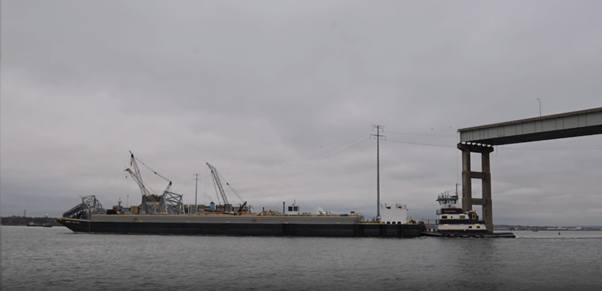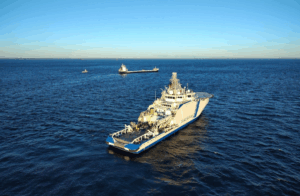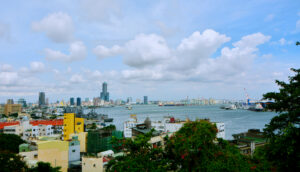
The tugboat Crystal Coast pushing a fuel barge, transited the temporary alternate channel created by the Key Bridge Response Unified Command and is the first vessel to use the channel since the bridge collapsed into the federal waterway on Tuesday.
The barge is used to supply jet fuel to the Department of Defense (DOD) and was transiting to Dover Air Force Base.
The Captain of the Port (COPT) established the temporary alternate channel near Sollers Point for commercially-essential vessels.
The temporary channel is on the northeast side of the main ship channel in the vicinity of the Francis Scott Key Bridge. This action is part of a phased approach to opening the main federal channel.
This new temporary channel is marked with government-lighted aids to navigation. It will be limited for transit at the discretion of the COTP and during daylight hours only.
This temporary channel has a controlling depth of 11 feet, a 264-foot horizontal clearance, and vertical clearance of 95 feet.
As it is reported, the Unified Command is working to establish a second, temporary alternate channel on the southwest side of the main channel.
This second channel will allow for deeper draft vessels with an anticipated draft restriction of 15 to 16 feet.
Two crane barges, a 650-ton crane and a 330-ton crane, are actively working on scene. Wreckage will continue to be lifted and transferred to a barge as daylight allows.
A 230-ton land-based crane will offload and process the wreckage at Tradepoint Atlantic, which will then be taken to a disposal site.
The current 2,000-yard safety zone around the Francis Scott Key Bridge remains in effect and is intended to protect personnel, vessels, and the marine environment.
“Members of the public may not enter the safety zone unless authorized by the COTP or designated representative. Those in the safety zone must comply with all lawful orders or directions given to them by the COTP or designated representative,” reads the statement of the key bridge response 2024.


